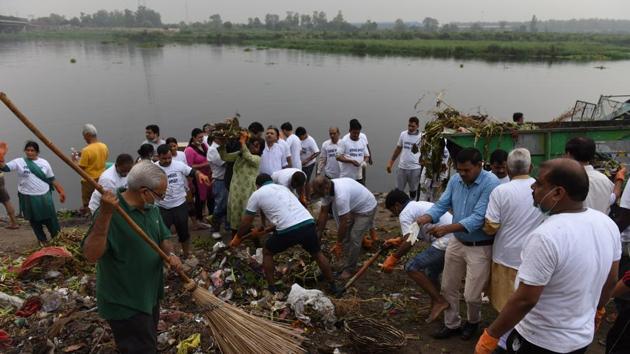Why Swachh Bharat Mission needs to go beyond 2019
Swachh Bharat is a well-intentioned programme whose benefits are clear. India will only be better off if it were to seek a continuous pursuit of cleanliness
On October 2, 2018 the Swachh Bharat Mission (SBM), a flagship programme of the Narendra Modi government, will enter its final year. The SBM, which was launched on October 2, 2014, claims to be “the largest behaviour change campaign ever attempted in the field of sanitation in the world” and is aimed at achieving complete open defecation free (ODF) habitations and improving solid waste disposal management systems. The programme is aimed at both rural and urban areas, with the ministry of drinking water and sanitation coordinating the rural efforts and ministry of housing and urban affairs looking at the urban part.

Government statistics show significant resource allocation and progress under the programme. Budget documents show an expenditure of more than Rs 56,000 crore under the programme by the central government. 87% of the spending has been done in rural areas. The actual spending would exceed this amount as the central funding is supposed to be 75% of the total expenditure, with state governments contributing an additional 25% of the funds. This ratio has been kept at 85%-15% in north-eastern and other special category states. State governments can also add/ generate funds for municipalities as additional incentives over and above its minimum 25 % share to make projects viable.

In addition, there is also the amount spent by companies, especially under their Corporate Social Responsibility programmes, although there is no authoritative measure of this. For instance, Tata Consultancy Services, Bharti Enterprises, and Larsen & Toubro have all built toilets using CSR funds for the Swachh Bharat campaign.
According to the SBM dashboard, more than 85 million toilets have been built in rural areas under the programme. In urban areas, almost 5.5 million toilets have been constructed so far. Around 400,000 of these are public toilets. The rural programme claims to have achieved ODF status for 21 states and union territories so far. At the district level the number is 457 out of a total of 718 districts in the country. These are impressive statistics by all means.

The question is whether the creation of physical infrastructure with one-time assistance from the government will have a lasting impact on achieving what the programme itself has identified as a “behaviour change” challenge. While SBM guidelines mandate a multi-stage audit before a habitation is given an ODF status, it is practically impossible for the state to keep tabs on whether the standards are being adhered to. Questions have also been raised on the ability of the physical infrastructure which has been created to achieve such a change.
For example, availability of water in or near the toilet is an optional criterion in the guidelines for ODF verification issued by the SBM rural division. Expectedly, these factors have been flagged by many academics and activists to question official claims about the success of SBM. A final resolution of this debate will have to wait for statistics from the 2021 census or the next round of National Family and Health Survey. A more important question is whether the official momentum which has built around the SBM should be allowed to die down once the programme completes its designated period. Some salient facts are worth reiterating here.
The combined grant for building a household toilet under the SBM rural programme is Rs 6,667.
It is to be expected that the quality of such toilets would be adequate but not ideal. The silver lining in this programme is that each of the toilets which have been built is geo-tagged in the SBM database. This database can be put to good use in re-evaluating the programme’s achievements after a couple of years. The government could announce a maintenance grant for the original beneficiaries of the programme. Or, it could use the spatial database on toilet locations to estimate and design better sewage systems in rural areas. This is important as poorly designed soak pits can contaminate underground water and defeat the original objective of the SBM.
The urban chapter of SBM faces a similar challenge.
There has been significant progress in door-to-door waste collection and 80% of urban wards had been covered up to July 2018. But only one-third of the waste being generated was being processed. Unless there is significant progress on the latter front, the gains from SBM urban will neither be sustainable nor egalitarian. With growing urbanisation, the challenge is likely to become bigger in the future.

Given the fact that the government has found the fiscal resources necessary to fund the programme so far, there is no reason why the same cannot be done in the future.
Swachh Bharat is a well-intentioned programme whose benefits are clear, but it needs to continue beyond 2019 to achieve the larger objectives it needs to.
India will only be better off if it were to seek a continuous and not a one-time pursuit of cleanliness.
(This is a first of a series that will run in Hindustan Times till October 2 and focus on the progress of the Swachh Bharat Mission.)






